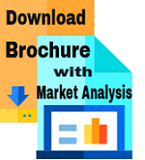
Khalid Awad Al-Kubaisi
University of Gloucestershire, UAE
Title: What drives using antibiotic without prescriptions? A mixed-methods study of university students perspectives in United Arab Emirates
Biography
Biography: Khalid Awad Al-Kubaisi
Abstract
Background: Bacterial resistance to the antibiotics is considered as natural phenomenon that occurs naturally over the time due to genetic changes. However, various factors lead to the acceleration of this process and resulting in antibiotics resistance. These factors include the overuse and the misuse of antibiotics, for example, taking an antibiotic for a viral infection like influenza (World Health Organization, 2016). This may be attributed to consumer’s lack of knowledge about the correct use of antibiotics, or it may be due to their wrong habit about using the antimicrobials. A key among the causes of the increased antimicrobial resistance is self-medication and drugs on one’s own initiative without consulting a qualified medical practitioner (Bennadi, 2014; p.19; WHO 2001, p.21 ). Bacterial resistance to antibiotics is increasing significantly in the UAE (Al-Dhaheri et al., 2009).Antibiotics use without prescriptions has been reported to be high among university‘s students worldwide (Javed, 2013; Awad andEltayeb, 2007; Sawalha, 2008; Sarahroodi et al., 2010; Sharif and Sharif, 2013; Ehigaiator et al., 2013; Badiger et al., 2012 and Kumar et al., 2013). There was no extensive studies that explore the reasons for misusing antibiotics among university students worldwide. Therefore, it was necessary for this study to investigate this type of irrational use of drugs in UAE.
Objective: The purpose of this research is to measure the prevalence of irrational use of Antibiotics by university students in UAE and identifies the reasons for this irrational drug use using mixed methodological approach.
Methods: A mixed methods research design with a sequential explanatory strategy was adopted to conduct this research (Creswell 2011; Cameron, 2009). The first quantitative cross-sectional analytical study was conducted from January to April 2014 with 2,875 students at three randomly selected UAE universities. The aim was to measure the prevalence and risk factors for misusing antibiotics among university students. A structured and validated questionnaire was used to collect the responses of the students. SPSS version 20 was used to analyze the data. A second interview study investigated first-year healthcare students at high risk of using antibiotics without prescription, with a purposefully selected sample. The aim was to further explore common themes related to their knowledge, awareness, attitude, views, and perceptions as well as possible strategies to decrease their misuse of antibiotics. Data were analysed thematically for the identification of themes and subthemes within the data through the use of coding
Findings: More than one third of users (484 of 1384, 36%) were reported using antibiotics without prescription during the 90 days prior to the present study. Of those medical students (n=492), 36.8% reported using antibiotics. Also, of those non-medical students (n=856), 36% of them were using the antibiotics, but the difference was statistically not significant (p-value= 0.608). Nine risk factors were identified for using antibiotics. Being Expatriates (OR = 0.471, 95% CI: 0.326-0.681, p<0.001). Participants who were influenced by the cost of Oral Non-Prescription Drugs (ONPD) (OR = 1.716, 95% CI: 1.175-2.508, p<0.005). Participant believing that ONPD are moderately effective (OR = 0.332, 95% CI:0 .135-0.815, p<0.02) or ineffective (OR =0 .400, 95% CI: 0.161-0.994, p<0.05) had significantly lower odds of using antibiotics in SMP compared to those who believed that ONPD are effective. Participants with good medication knowledge (OR = 0.619, 95% CI: 0.443-0.866, p < 0.005). Also, participants in their fourth year of study (OR = 0.310, 95%, CI: 0.141-0.681, p < 0.004), fifth year of study (OR = 0.243, 95%, CI: 0.088-0.666, p < 0.01), or sixth year of study (OR = 0.101, 95%, CI: 0.015-0.678, p < 0.02) had lower odds of using antibiotics in SMP compared to participants in their first year of study. Being a medical student was a risk factor for using antibiotics in SMP (OR = 1.465, 95%, CI: 1.012-2.120, p < 0.05). Overall the second interview study identified four main themes with multiple subthemes related to the use of antibiotics without a physician’s prescription by first-year healthcare students. The thematic analysis of the interviews revealed four main themes:
- Medication habits and practices
- Reasons for self-medication
- Access to antibiotics without a prescription
- Gaps in students’ knowledge regarding antibiotic resistance
Conclusion: The prevalence of using antibiotics is high among university students in UAE. There is a need for an educational intervention to motivate students to be use antibiotics wisely.

